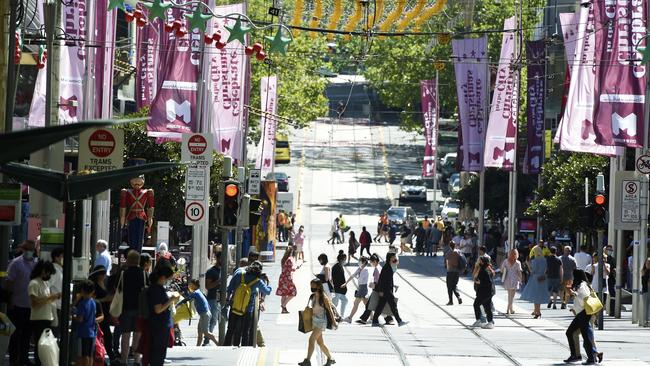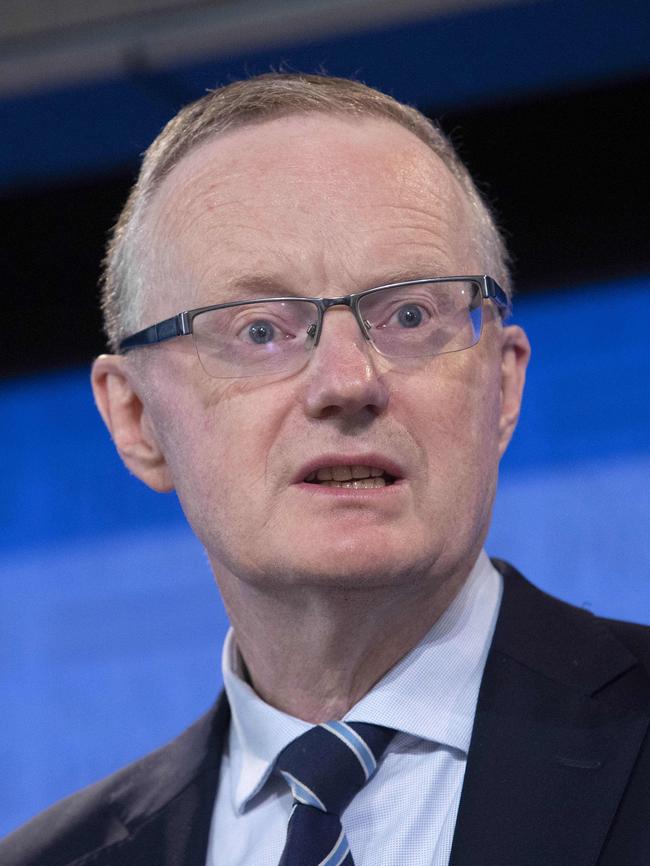Shift is on as Reserve Bank firms on earlier rate rise
The Reserve Bank has again shifted from calendar-based rate guidance, leaving open possible earlier rate hikes while vowing to remain ‘patient’ on the economy.

The Reserve Bank has continued to shift away from calendar-based interest-rate guidance, leaving open the possibility of earlier rate hikes while vowing to remain “patient” on the economy.
As with Philip Lowe’s post-meeting statement and a speech from the RBA governor this month, minutes of the December meeting omitted past guidance that the “central scenario for the economy continued to be consistent with the cash rate remaining at its current level until 2024”, reinforcing expectations of a slowdown in the housing market if rates rise as economists expect by 2023.
But while Omicron posed “additional uncertainty” for the near-term outlook, had caused some delays in a further reopening in the international border, and could give rise to renewed restrictions or travel hesitancy, the new variant of Covid-19 was “not expected to derail the recovery”.
The RBA’s business liaison program suggested that investment intentions were at, or above, average levels for most industries and businesses continued to report difficulties finding workers for certain roles, including in the construction, professional services, agricultural and hospitality sectors. They were generally expecting wage increases over the coming year of only about 2.5 per cent, broadly in line with expectations for wage growth in the pre-pandemic pattern.

Still, the RBA minutes highlighted a pick-up in job mobility after a sharp fall at the start of the pandemic.
The bank assessed that this reflected “workers catching up on planned job changes” and “more workers feeling encouraged by strong labour market conditions to change jobs”.
It said wage rises were concentrated in “high-skilled jobs in professional and other business services sectors”, while other sectors remained around historical averages.
Higher rates of voluntary job turnover in some sectors “could in time lead employers to offer higher wages to retain their workers”, but the experience in Australia had been different to the US, where job resignation rates were at historically high levels and were coming at a time when labour force participation and employment remained considerably below pre-pandemic levels.
“Governor Lowe recently pushed back on market pricing for interest rate rises in 2022, but in his speech and the minutes of its December board meeting there was no mention of 2024, which had been characterised as the ‘central scenario for interest rate lift off’ as recently as November,” NAB director of economics and markets Tapas Strickland said.
“To us that suggests the RBA is now seeing 2023 as being more probable than the previously characterised ‘plausible’ terminology,” he said.
“That also likely means the upside scenario sits in late 2022 or early 2023.”
NAB expects QE to end in February 2022, one of three scenarios outlined by the RBA.
Mr Strickland predicted the RBA would again be surprised by the performance of the economy.
A 1.9 per cent contraction in September quarter growth was much less than the 2.5 per cent fall the RBA expected, the unemployment rate was already at 4.6 per cent – well ahead of the RBA’s expectation of 4.5 per cent in June 2022 – and trimmed mean inflation could hit 0.8 per cent in the December quarter versus the RBA’s forecast of 0.6 per cent, Mr Strickland said.
NAB’s forecast has trimmed mean CPI for the past six months annualising at close to 3 per cent, at the top end of the RBA’s 2-3 per cent target band.
“It reinforces the RBA’s forecasts have been too consistently too pessimistic about the economy, and in turn so has their forward guidance,” Mr Strickland said.
“To that extent the market has been sending signals based on international developments that the RBA is likely to hike rates earlier, but I still struggle to see 79 basis points of RBA rate hikes being priced in 2022 as the market currently has now.”
The minutes said the RBA would not increase the cash rate until “actual inflation is sustainably within the 2 to 3 per cent target range”, and the labour market must be “tight enough to generate wages growth that is materially higher than it is currently”.
“This is likely to take some time and the board is prepared to be patient,” the minutes said.
While Dr Lowe in his recent speech tried to divorce the timing of the end of QE and the timing of hikes – saying it had “no implications for an increase in interest rates” – the US experience showed the decisions were closely linked, given they were both calibrated off progress on inflation and employment, Mr Strickland said.
CBA head of Australian economics Gareth Aird said the RBA was recently able to drop its 2024 guidance by ending its recent pandemic-era yield curve control.
“It was harder for them to pull back on the calendar-based forward guidance while they still had the yield curve target pegged to the April 24 bond at the same rate as the cash rate, implying the cash rate was on hold until at least April 24,” he said. “Basically they needed to get rid of yield curve control to have more flexibility.
“It makes it crystal clear that the RBA’s forward guidance on the cash rate is state-based and not calendar-based,” he said.




To join the conversation, please log in. Don't have an account? Register
Join the conversation, you are commenting as Logout